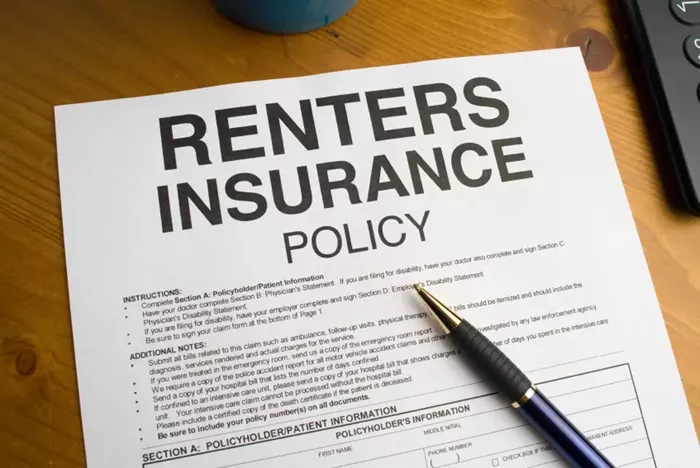Renters insurance provides financial protection for tenants, covering loss or damage to personal property, liability, and additional living expenses. Understanding how renters insurance payouts work is essential for policyholders to make informed decisions and ensure they receive fair compensation in the event of a claim. This article will explain the payout process, types of coverage, the steps involved in filing a claim, the impact on premiums, and how policy limits and deductibles influence the payout amount.
Explanation of Renters Insurance Claim Payouts
Renters insurance claim payouts occur when a policyholder experiences a covered loss or damage to their personal property and files a claim with their insurer. The payout process involves several steps:
Claim Filing: The policyholder must file a claim with their insurance company, providing details of the loss or damage, along with any supporting documentation.
Claim Evaluation: The insurer reviews the claim, assesses the extent of the loss, and determines if the event is covered under the policy.
Damage Assessment: An insurance adjuster may be assigned to inspect the damage and estimate the cost of repair or replacement.
Payout Calculation: The insurer calculates the payout amount based on the type of coverage (Actual Cash Value or Replacement Cost Value), specific policy limits, and the deductible.
Payout Issuance: Once the claim is approved, the insurer issues the payout to the policyholder, either as a lump sum or through reimbursement for expenses incurred.
Types of Coverage
Understanding the types of coverage available in renters insurance is crucial for determining how payouts are calculated.
Actual Cash Value (ACV): ACV coverage pays the current market value of the damaged or lost item, factoring in depreciation. For example, if a five-year-old television is damaged, the payout will be based on its depreciated value rather than the purchase price.
Replacement Cost Value (RCV): RCV coverage pays the cost to replace the damaged or lost item with a new one of similar kind and quality at current market prices. Using the same television example, RCV would cover the cost to buy a new television of comparable features and quality.
Choosing between ACV and RCV coverage can significantly impact the payout amount, with RCV generally offering higher payouts as it does not account for depreciation.
Filing a Claim
Filing a renters insurance claim involves several steps to ensure that the policyholder receives fair compensation for their loss or damage.
Document the Loss: Immediately after discovering the loss or damage, document the affected items. Take photographs, make a list of the damaged or stolen property, and gather any receipts or proof of purchase.
Review the Policy: Before filing the claim, review your insurance policy to understand the coverage, exclusions, and specific limits that may apply to the loss.
Notify the Insurer: Promptly notify your insurance company of the loss or damage. Most insurers have a specific timeframe within which claims must be reported.
Submit the Claim Form: Complete the claim form provided by the insurer, detailing the loss and providing supporting documentation. This may include photographs, receipts, and a police report if the loss is due to theft.
Cooperate with the Adjuster: If an insurance adjuster is assigned to inspect the damage, cooperate fully and provide any additional information or documentation requested.
Follow Up: Stay in touch with your insurer throughout the claims process, providing any additional information promptly and keeping records of all communication.
Impact on Premiums
Filing a renters insurance claim can potentially impact your premiums. Insurers may perceive a policyholder who files a claim as a higher risk, which can result in increased premiums upon policy renewal. However, the extent of the increase depends on several factors:
Claim History: Frequent claims or multiple claims within a short period can lead to significant premium increases.
Claim Amount: Higher claim amounts can have a more substantial impact on premiums compared to smaller claims.
Type of Claim: Claims related to theft, liability, or high-value items may be viewed as higher risk, influencing premium adjustments.
Some insurers offer “claim forgiveness” for policyholders with a history of few or no claims, meaning one claim may not lead to an immediate increase in premiums.
see also: Does Renters Insurance Cover Bike Theft
Policy Limits and Deductibles
Coverage limits and deductibles play a critical role in determining the payout amount for renters insurance claims.
Coverage Limits: Each policy has specific coverage limits, which are the maximum amounts the insurer will pay for different types of losses. It’s essential to choose coverage limits that adequately reflect the value of your personal property. For example, if your personal property coverage limit is $30,000, the insurer will not pay more than this amount for a covered loss.
Deductibles: A deductible is the amount the policyholder must pay out of pocket before the insurance coverage kicks in. Deductibles can range from $250 to $1,000 or more. For instance, if your claim amount is $5,000 and your deductible is $500, the insurer will pay $4,500.
Selecting appropriate coverage limits and deductibles involves balancing the need for adequate protection with affordability. Higher deductibles typically result in lower premiums but require the policyholder to pay more out of pocket in the event of a claim.
Process of Receiving the Payout
The process of receiving the payout after filing a renters insurance claim involves several steps and timelines:
Claim Review: After the claim is filed, the insurer reviews the details and supporting documentation. This initial review can take anywhere from a few days to a couple of weeks, depending on the complexity of the claim.
Adjuster Inspection: If an insurance adjuster is assigned, they will inspect the damage and estimate the cost of repair or replacement. This step can add a few more days to the process.
Payout Calculation: The insurer calculates the payout amount based on the type of coverage (ACV or RCV), policy limits, and deductible. This calculation process typically takes a few days.
Approval and Issuance: Once the claim is approved, the insurer issues the payout. Depending on the insurer’s processes, this can be done via check, direct deposit, or reimbursement for expenses incurred.
Timeline: The entire process, from filing the claim to receiving the payout, can take anywhere from a few days to several weeks. Complex claims or those requiring extensive documentation may take longer to process.
Conclusion
Understanding how renters insurance payouts work is essential for tenants to ensure they receive fair compensation in the event of a loss or damage. By knowing the differences between Actual Cash Value and Replacement Cost Value, the steps involved in filing a claim, the impact on premiums, and how coverage limits and deductibles influence the payout amount, policyholders can make informed decisions and navigate the claims process with confidence.
Renters insurance provides crucial financial protection, offering peace of mind and security for tenants. Regularly reviewing your policy, maintaining a comprehensive home inventory, and consulting with insurance professionals can help ensure that you have the right coverage to meet your needs and protect your personal property.
[inline_related_posts title=”You Might Be Interested In” title_align=”left” style=”list” number=”6″ align=”none” ids=”2165,2161,2179″ by=”categories” orderby=”rand” order=”DESC” hide_thumb=”no” thumb_right=”no” views=”no” date=”yes” grid_columns=”2″ post_type=”” tax=””]




















